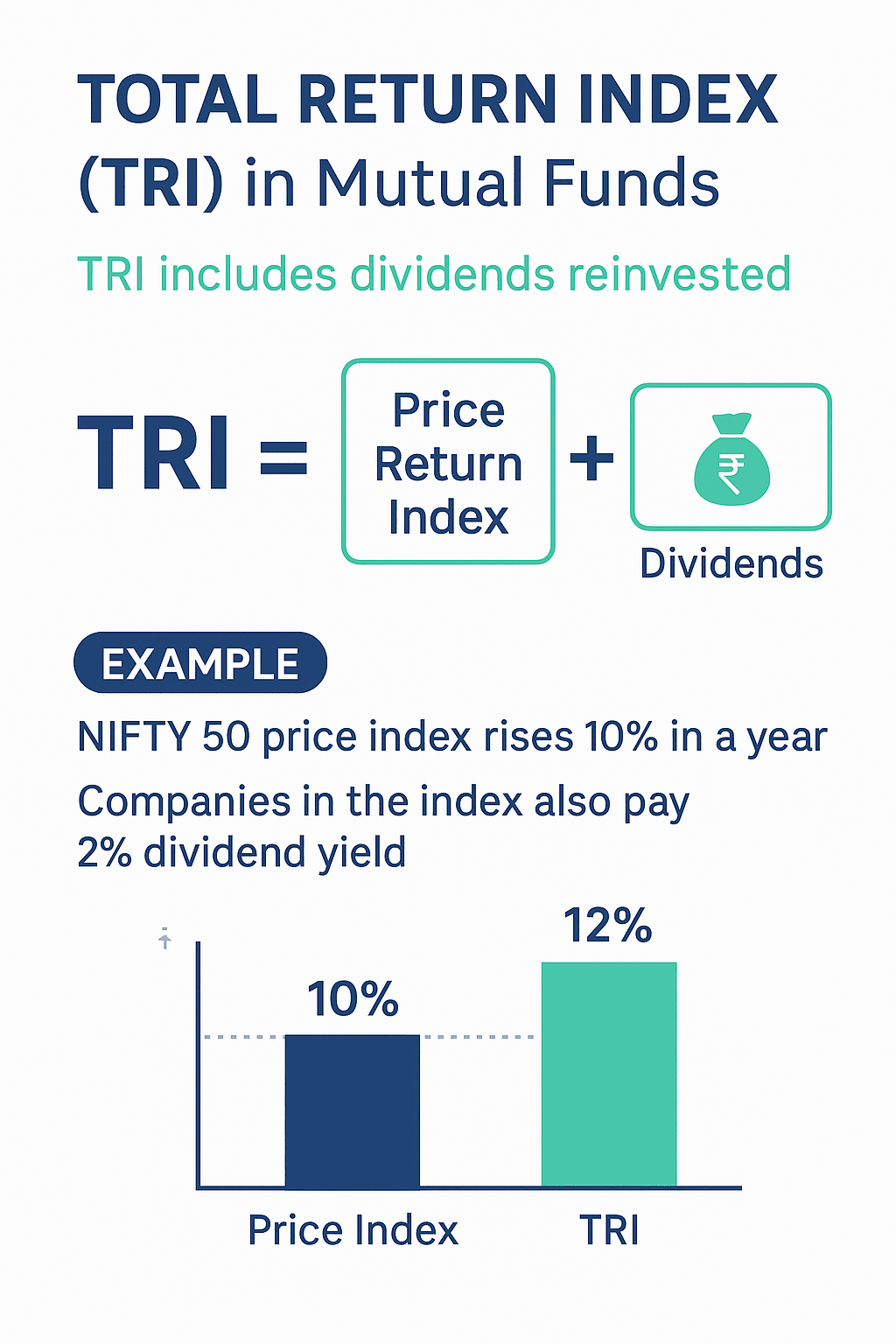What is TRI in mutual fund schemes?
Understand TRI or Total Return Index in mutual fund schemes. Learn how TRI accurately reflects the fund's performance, including capital appreciation and dividend payouts, offering a clearer picture than NAV alone.

What is TRI in Mutual Fund Schemes?
Total Return Index (TRI) is a crucial metric used to evaluate the performance of mutual fund schemes. Unlike the Net Asset Value (NAV), which only reflects the per-unit value of the fund, TRI provides a more comprehensive picture of the fund's returns. It accounts for both capital appreciation and dividend payouts, giving investors a truer representation of their overall investment growth.
Why is TRI Important?
The NAV alone can be misleading, especially for funds that regularly distribute dividends. A high NAV might not necessarily indicate strong performance if the fund has consistently paid out dividends, reducing the NAV while potentially boosting the investor's overall return. TRI addresses this by incorporating these dividends into the calculation, providing a complete picture of the fund's returns over time.
How is TRI Calculated?
TRI is calculated by considering the following:
- Initial NAV: The starting NAV of the fund.
- Capital Appreciation: The increase in the NAV over the period.
- Dividend Reinvestment: Any dividends paid out during the period, assuming they are reinvested back into the fund.
The formula for TRI calculation is complex and often involves geometric averaging to account for the compounding effect of returns. However, the essential takeaway is that it offers a more accurate reflection of the investor's overall returns.
TRI vs. NAV: A Clearer Picture
While NAV is useful for tracking the per-unit price of a fund, TRI provides a better understanding of the actual return generated for an investor. Consider this example:
Let's say a fund starts with an NAV of ₹100. Over a year, it distributes ₹10 in dividends, and the final NAV is ₹105. The NAV shows a 5% increase. However, the TRI would be higher, reflecting the added value of the reinvested dividends. TRI will accurately reflect the total return experienced by an investor who reinvested dividends.
Conclusion
TRI serves as a valuable tool for investors seeking a more accurate assessment of mutual fund performance. By incorporating both capital appreciation and dividend payouts, TRI offers a complete and unbiased view of the fund's return, helping investors make informed decisions.
- Software for Fund Houses